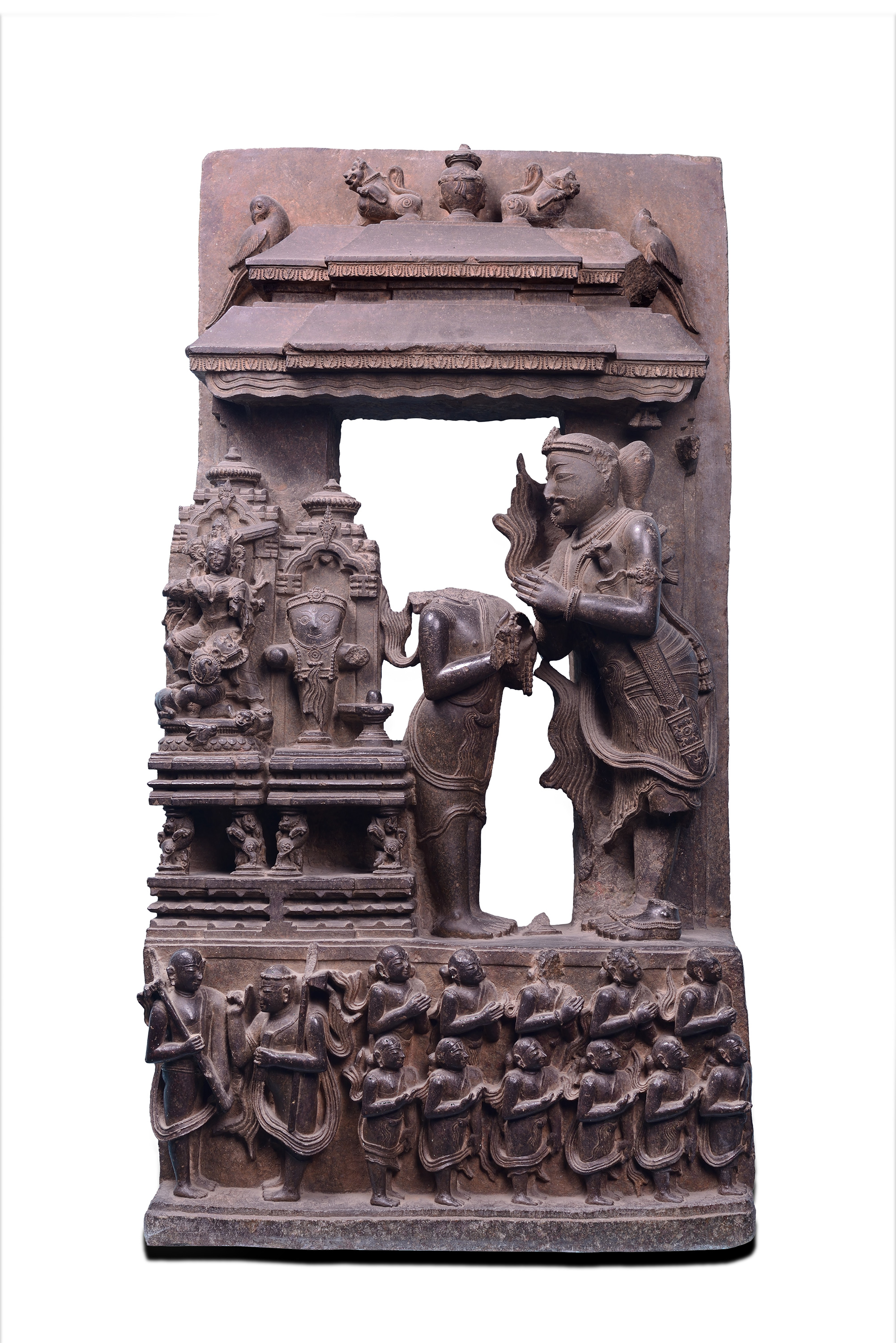Discover, Learn, immerse, Connect
King Narasimha Worshipping Jagannath
This striking sculpture depicting the Ganga King Narsimha worshipping Jagannath dates back to the 13th century CE and finds its origin in Konark, Odisha. It is 89 cm in height, 47 cm in width and 23 cm in depth. This artefact is currently on display at the National Museum, New Delhi.
The Eastern Ganga Dynasty or Chodhganga dynasty was a medieval Indian dynasty that ruled Kalinga from the 11th century to the 15th century. The territory ruled by the dynasty consisted of modern day Odisha as well as parts of West Bengal, Andhra Pradesh and Chhattisgarh.
A fascinating detail is that the size of the King in the sculpture is bigger than both the gods put together and their pedestals. The King Narsimha is shown in reverence but the fact that his figure is bigger in size than even the deities he is bowing down to hints at the artist’s attempt to show the King to be much more powerful than the gods.
In this sculpture made of stone, King Narsimha is depicted bowing down to the deities present in front of him, namely Durga and Jagannath and Shiva. The sculpture seems to be representing a court scene wherein the guards and priests are placed at the bottom of the sculpture and are looking towards the king with their hands folded in reverence. The guards seem to be holding axes in their hands. The deities Durga and Jagannath are placed on a pedestal which signifies their elevated position as divinity. Durga is well dressed and decked with a lot of jewellery. She is depicted to be the destroyer of Mahishasur with a big sword in her hand.
Jagannath is a deity worshipped in regional traditions of Hinduism and Buddhism in India and Bangladesh. Jagannath is considered a form of Vishnu. He is a part of a triad along with his brother Balabhadra and sister Subhadra. Some Vaishnava Hindus consider Jagannath to be an abstract representation of Krishna while some Shaiva and Shakta Hindus consider him to be a symmetry-filled tantric representation of Bhairava. For Buddhists on the other hand, he stands as a symbol of Buddha in the Buddha-Sangha-Dhamma triad while for some Jains, his name and his festive rituals are derived from Jeenanath of Jain tradition. The worship procedures, sacraments and rituals associated with Jagannath are syncretic and include rites that are uncommon in Hinduism. The origin and evolution of Jagannath worship is unclear. Jagannath is considered a non-sectarian deity.
 Government of India
Government of India



